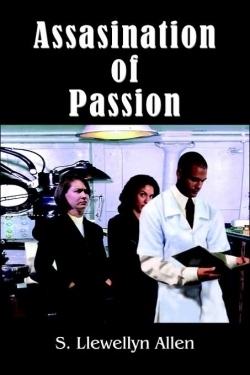Assasination of Passion
Assasination of Passion [sic] begins with a poem presumably written by a man to a woman he has disappointed after many years together, and ends with the narrator’s commentary on the problems with our healthcare system. In between these two very different texts is the story of Arthur Adams, the child of a West Indian father and an African American mother, who comes of age in the 1960s. His childhood is marked by being put into school early and his father’s strict discipline, which includes whipping Arthur in front of his entire class. Later, like many other young men, he experiences confusion about sex and the desire to fit in.
A family friend finds a way to get Arthur into a predominantly black college in the South only days before he is to report to the armed forces. Later, Arthur finds himself embarking on a career as a dentist in New York. The phrase “finds himself” is apt because, as the narrator later notes, there were a number of professional men in the 1950s and ’60s who were “as much victims of the Vietnam War as some of the veterans of the war. These men were steered into health professions and away from what may have been their true calling to avoid the Vietnam War.”
The pressures of being a professional and a family man take their toll, and Arthur dabbles in drugs, carries a weapon, and becomes friendly with thugs. The narrator notes that many professional men lived this kind of double lifestyle, keeping their families hidden away at home while they did things that were either illegal or questionable.
Arthur eventually decides to get into private practice back South, a move that his wife welcomes. However, he becomes prideful with increased professional accolades, and a new office assistant helps to derail his career and puts all that he has worked for in jeopardy.
Readers will learn about growing up in the 1960s and may be intrigued at the glimpse into the intricacies of the dental profession. Assasination of Passion isn’t light reading, however. The narrative voice is stiff and clinical at times, even when describing childhood incidents. In a description of a baseball game, for example, the author writes, “It was at that point when he suddenly noticed the situation and became acutely aware of all the circumstances around it; the Japanese would call it a satori…It was the fear that makes you feel like you are going to vomit or defecate watery excrement.”
S. Llewellyn Allen himself is a dentist, so he has inside knowledge of the profession that the narrator describes as a “brotherhood.” Although the author and the protagonist are both dentists who work in North Carolina, it is unclear how much of the book is autobiographical; the book’s confiding tone will make readers wonder. The narrator is someone who knows Arthur well enough to tell his tale and even does some psychoanalysis on him.
The novel begins as an individual coming-of-age tale that also typifies a generation, then it shifts into a workplace drama, and finally moves into legal thriller territory. In his desire to shed light on the pressures facing dentists using fiction, the author has incorporated too many disparate elements into the book.
Reviewed by
Jada Bradley
Disclosure: This article is not an endorsement, but a review. The publisher of this book provided free copies of the book and paid a small fee to have their book reviewed by a professional reviewer. Foreword Reviews and Clarion Reviews make no guarantee that the publisher will receive a positive review. Foreword Magazine, Inc. is disclosing this in accordance with the Federal Trade Commission’s 16 CFR, Part 255.

